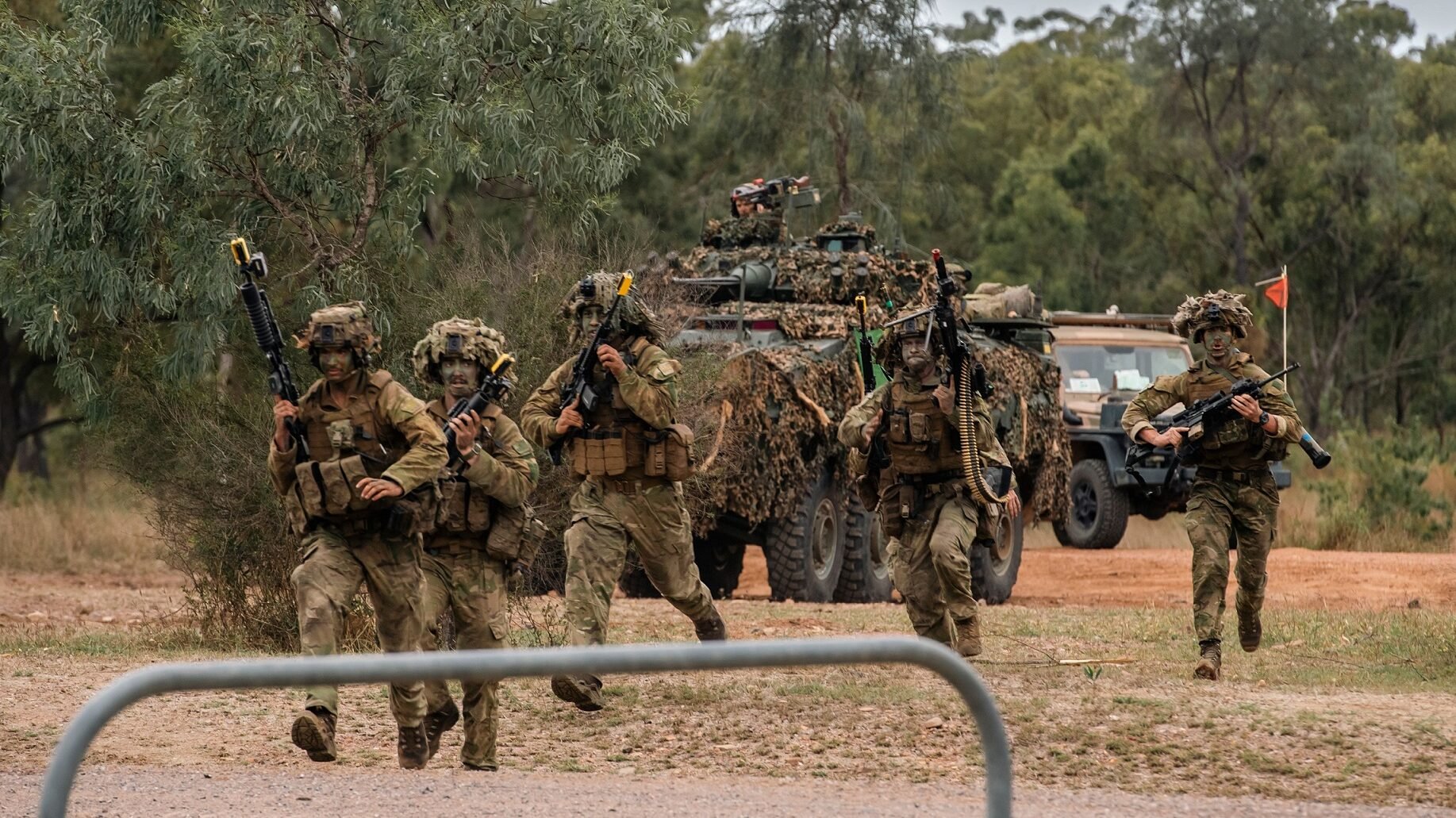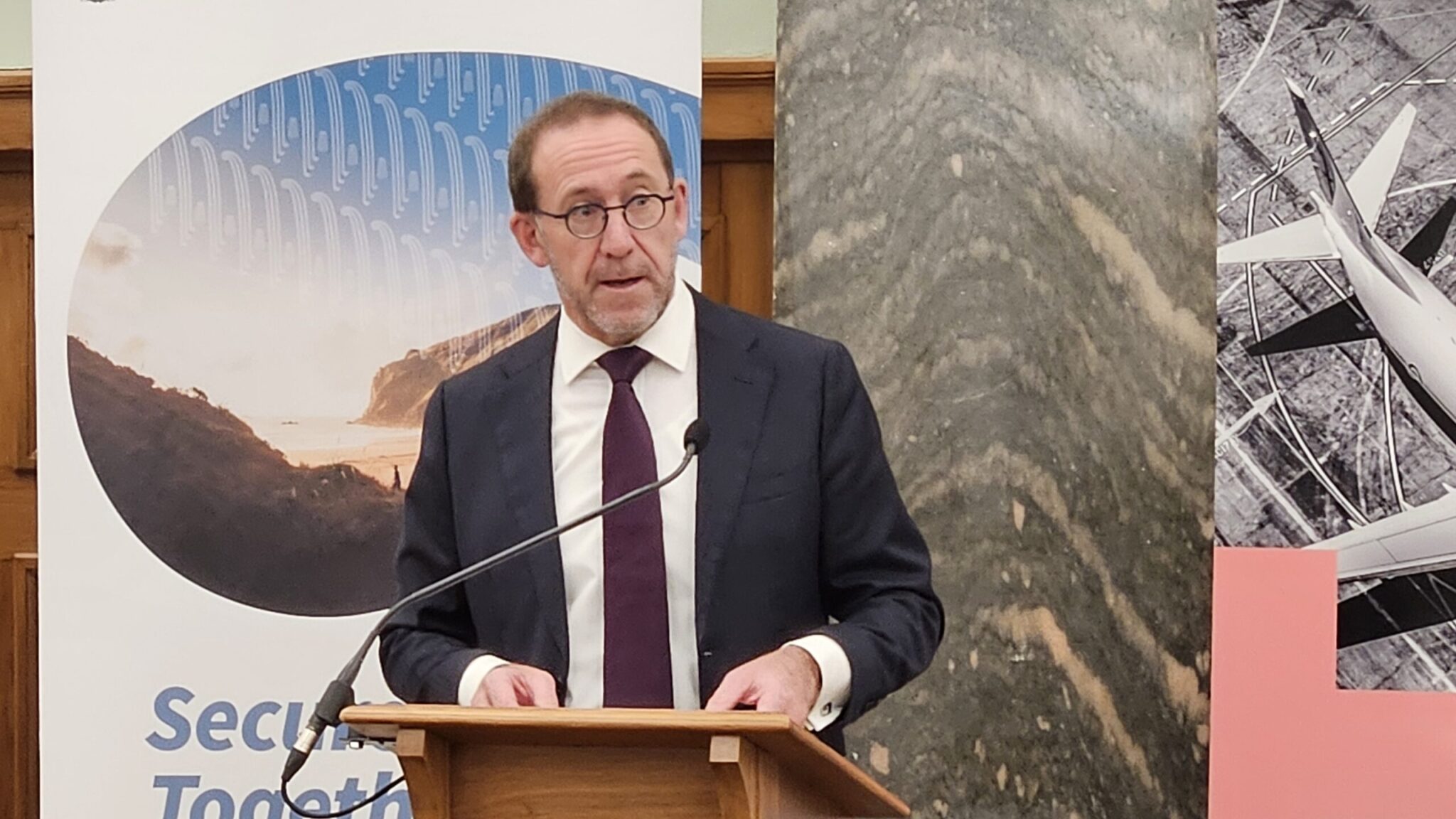"These documents represent a clear statement of intent by the New Zealand Government to step up its foreign policy and military efforts in the Pacific," one analyst told Breaking Defense.
AUCKLAND — A new series of national security and defense policy documents for New Zealand codifies a new drive for Wellington to be seen as a regional power, even as the country seems keen to avoid directly antagonizing China.

The first-ever National Security Strategy (NSS) was released Aug. 4 alongside the first two parts of New Zealand’s latest defense review, a Defence Policy Strategic Statement (DPSS) and the Future Force Design Principles (FFDP). Similar to the American National Security Strategy, the NSS serves as a whole-of-government policy guidance, while the DPSS and FFDP are specifically focused on the Ministry of Defence. Taken together, the documents represent the clearest statement of New Zealand’s defense policy and national security thinking in years.
David Capie, director of the Centre for Strategic Studies at Victoria University of Wellington, told Breaking Defense that the NSS is “the first strategy of its kind and it sets out some specific proposals for work going forward, but I think the main thing it does is to send a clear signal about some priority issues and the importance of supporting a broader, better-informed conversation about national security.”
These documents build on an earlier Defence Assessment from 2021 that argued that New Zealand needs to be more proactive in its defense posture. The DPSS states that the protection of New Zealand’s interests needs to be pursued “through a more deliberate and purposeful approach to shaping our security environment, focusing in particular on security in and for the Pacific.”
This builds on New Zealand’s “Pacific Reset” policy announced in 2018, emphasizing warnings about increasing strategic competition in the Pacific, Southern Ocean and Antarctica and the impact of climate change on security.
”The New Zealand government has gone as far as they are willing to go for the time being in criticizing China,”
Reuben Steff, a Senior Lecturer at the University of Waikato, told Breaking Defense that “These documents represent a clear statement of intent by the New Zealand Government to step up its foreign policy and military efforts in the Pacific.”
He added that they are “better late than never” but the highlighted that the deteriorating security environment was identified in 2018, “raising the question of what precisely the government has been doing for the last five years, and why meaningful decisions continue to be delayed.”
The DPSS states that activities of concern in the Pacific include “the establishment of a persistent military presence by a state that does not share New Zealand’s Pacific security interests and values; military or para-military-backed resource exploitation (particularly fisheries); or even military confrontation or conflict.”
The NSS and DPSS are reluctant to name China directly as a threat, referring to it only 12 times and twice respectively. However, while the DPSS states that New Zealand’s relationship with Beijing is “significant” and “cooperation will continue to be essential in addressing many global challenges,” it does acknowledge that the PRC is “using all the instruments of national power” to challenge international rules and norms.
”The New Zealand government has gone as far as they are willing to go for the time being in criticizing China,” Steff said, “At some point, it becomes redundant and not referencing China so often does not indicate a ‘softening.’ China activities and military buildup remain one of the core motivations for these new documents.”
He explained that China is increasing its diplomatic presence, economic ties, aid contributions and infrastructure developments. The latter have dual use utility, such as ports that can be used for both trade activity and military operations.
Robert Patman, senior lecturer in International Relations at Otago University told Breaking Defense: “There is not a complete consensus on the nature of the Chinese threat, the US has had a much harder line on China than New Zealand’s governments have. What was most disappointing about the three documents is there is a lot emphasis on the dangers, but no emphasis on the opportunities.”
He explained that most of these problems faced in the region don’t respect national borders and this “creates an enormous opportunity” for small and middle powers to be part of the solutions that need to be generated. “I think New Zealand has a role to play in that,” he said.
READ MORE
- Australia-NZ could combine on deal for smaller, missile-laden frigates
- New Zealand spies call out foreign interference, including by China, in first-of-its-kind report
- With China in sights, New Zealand signals major defense policy shift
- Australia to take key role in NZDF capability growth
In this regard the DPSS also highlights climate change as the “single greatest threat to security and well being of the Pacific” and in this context that greater outside assistance will be needed by the island nations to respond to crises.
“Climate change is already imposing huge costs on Pacific states in terms of how to shore up low lying islands and infrastructure,” Capie said, “It’s affecting the movement of fish stocks that are already under pressure. And we know the increased number of severe weather events is creating opportunities for a range of states to increase their presence in the Pacific through HADR responses and the like.
The DPSS explained that this need for external support may “increase their vulnerability to influence and coercion” and warns against the growing interest from states outside the region that may act in ways counter to the interests of the Pacific and New Zealand.

Regional Power, Regional Risks
One reason for New Zealand’s focus on the Pacific as the region is identified as an area where it “can often have the greatest material impact” and has level of influence unmatched in other areas. The past year has seen a concerted cross-government effort to enhance defense relations.
“NZ wants to make sure it is seen as a partner of choice for Pacific countries, and ideally to help them build the resilience they need so others don’t find an opportunity to step in,” Capie said. “It’s about prioritization,” Steff said, “It reflects the fact that the balance of influence in the Pacific has changed in recent years and the region is not only core to NZ’s immediate security interests, but one where NZ has capabilities that can make a difference and an established set of relationships to be leveraged.”
“most of the Pacific island states welcome the US-China rivalry because it gives them much greater options than they had before when very few countries were interested in region.”
The NSS call for an expansion of information sharing with New Zealand’s Pacific partners, and creates a new Pacific National Security and Intelligence Coordinator role to manage the process. The DPSS takes this further, and will develop a Common Operating Picture (COP) that integrates information from regional and other partners. The purpose is to improve collective understanding, resilience building and action.
“Let’s face it,” Patman said, “most of the Pacific island states welcome the US-China rivalry because it gives them much greater options than they had before when very few countries were interested in region.”
However, whilst Capie acknowledges the emphasis on the Pacific he said that contributing globally to collective security efforts remains one of the NSS’s three stated defence policy objectives — meaning that New Zealand is reluctant to abandon its wider commitments. “In practice though, with limited resources, people and assets, then I suspect tensions between regional and global commitments are going to play out in debates and decisions about where to deploy, but that’s not entirely new,” he added.
Meanwhile other regions important to New Zealand are also seeing an increased threat to security including the Southern Ocean and the Antarctic.
READ MORE
- New Zealand unveils defense strategy documents. Here’s what they say.
- Is NZ gearing up for war? Newshub Nation's Laura Walters quizzes Andrew Little on major new defence strategy
- NZ’s first national security strategy signals a 'turning point' and the end of old certainties
- Changing global tensions prompt New Zealand to ramp up security and defence resources
Strategic interest in these areas “is growing” the DPSS states and warns that the Antarctic Treaty System, which aims to preserve Antarctica as a place for peace, science and international cooperation “is not immune to pressure from growing strategic competition” adding that “some states see the region as a potential location for a range of military and security-related interests.”
The way New Zealand wants to counter these threats is through early intervention to prevent problems from arising. It aims to do this by anticipating then responding to events and deploying combat capabilities if needed. But there are significant challenges New Zealand faces if it wants to achieve this capability: The FFDP states that the New Zealand Defence Force (NZDF) “is designed for a relatively benign strategic environment, and not the challenges of increased strategic competition” adding that as a result “it is not in a fit state to respond to future challenges.”
However, exact details of what this all means — and how it can realistically be implemented — remain unclear, and won’t truly be announced until next year. That’s when the third part of New Zealand’s defence policy, the Defence Capability Plan (DCP), will be released. That document sets the procurement goals for the next 10-15 years.

Reliance On Australia
New Zealand’s defense strategy has three themes — Understand, Partner and Act. The first “Understand” is to bring about increased situational awareness and the Pacific COP is part of this. There are also plans to expand the use of space-based systems, and a suggestion that AUKUS Pillar 2 “may present an opportunity for New Zealand to cooperate with close security partners on emerging technologies.”
This is a controversial position for New Zealand, which values its independent foreign policy approach and sees itself as a different influence in the region compared to the US or Australia. AUKUS is mentioned just twice in the DPSS but it has already caused waves. Immediately following the defence policy announcement former NZ Prime Minister Helen Clark indicated her opposition to the country’s inclusion in the arrangement.
“I think we need to be clear eyed,” Patman said, “China’s not the only threat to the rules-based system. And our strategy should reflect that. It seems to me that one of the crucial dividing lines in the AUKUS debate is how much weight is attached to great power rivalry. I feel those urging New Zealand to join pillar two assume that great powers determine world politics, and we simply got to pick a side and that we have no choice. Helen Clark is basically saying that the documents reflect a bit of American-centric view of the Chinese threat.”
“a credible combat-capable, deployable military force able to operate across the spectrum of operations.”
He added: “My big concern is that AUKUS will actually help Chinese propaganda with their narrative that the Anglosphere of English-speaking countries is trying to dictate to the Pacific, which is untrue, but it gives that more credibility than it deserves. The best way of dealing with China is to make sure Putin is defeated, because after all, China’s supporting, or at least tacitly supporting the Russian invasion [of Ukraine].”
That said the “Partner” element of the policy identifies Australia as New Zealand’s “most critical” defense and security partner and its only formal ally. It can be expected the NZDF will have to rely heavily on the Australian Defence Force (ADF) to help it develop the structures, procedures and doctrine to enable it to be flexible enough to support more proactive and high-tempo operations.
NZ defense minister Andrew Little said on Aug. 4 that the NZDF must become a “a credible combat-capable, deployable military force able to operate across the spectrum of operations.” Realistically, Australian assistance will be needed to achieve that.
The Australian Army and New Zealand Army have already signed a Bilateral Security Cooperation Agreement (BSCA) in April 2023 — also known as Plan ANZAC. The BSCA is a framework that will see the two forces become much more closely integrated than ever before eventually achieving “tactical interchangeability” with the NZ Army with the latter adopting Australian training, procedures and doctrine. It can be expected that naval and air forces may follow a similar path.
Little told reporters on Aug .4 that he expects defense spending to rise in the next few years above the average 1% of GDP New Zealand usually spends. Although there will be increases he said it is unlikely to reach the 2% GDP level that is recognized as the norm for Australia and the ambition for European NATO countries.

